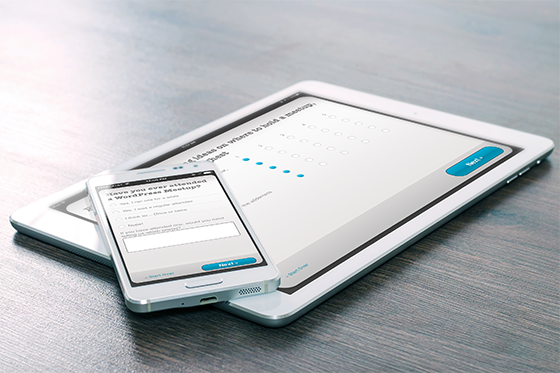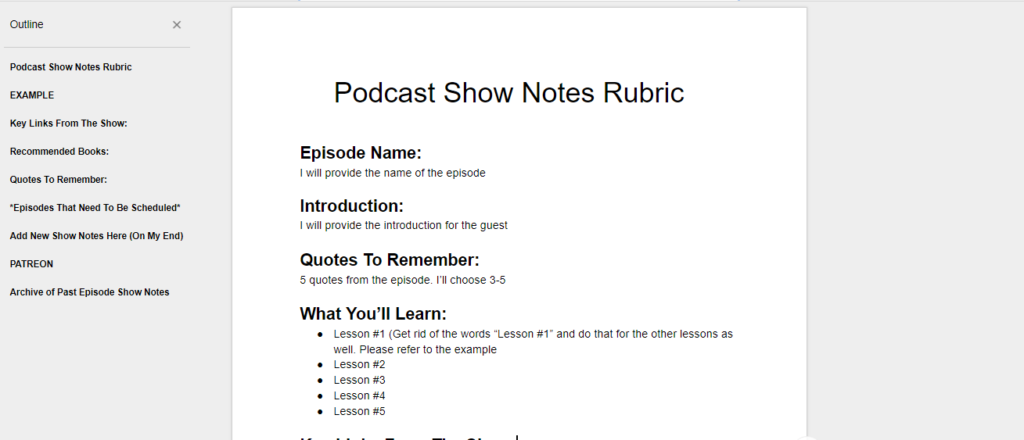It’s easier to become a successful blogger if you take the full-time route. However, it is also possible to become a successful part-time blogger.
While I see myself as a full-time entrepreneur, I must acknowledge that I am technically part-time since I’m a college student.
When you’re part-time, you don’t has as much time as a full-time blogger to commit towards your blog. That doesn’t necessarily put you at a disadvantage. This lack of time can actually be your greatest asset.
When you don’t have as much time, you get smarter with the time that you have. Mastering efficiency and effectiveness now will result in massive gains when you go from part-time to full-time.
Here are some tactics that will help you become a successful part-time blogger.
Knowledge Acquisition On The Road
The best way to speed your growth is to learn more about blogging and your niche as a whole. However, if you spend too much time acquiring knowledge, you won’t have enough time to write blog posts.
While I find time to read every day, you’ll also find it very effective to listen to podcasts or audiobooks on your daily commutes. Music will provide you with short-lived motivation (if your lucky enough to hear your favorite some on the radio), but listening to a podcast or audiobook will provide you with knowledge that will speed up your success.
To see the impact of this tactic, let’s say your daily commute is 20 minutes one-way. That means you’re on the road for at least 40 minutes every day. That comes to a total of 14,600 minutes (243 hours and 20 minutes) every year.
Finally, let’s say you listen to your audio content at 1.5 speed instead of the regular speed. I wouldn’t recommend making it too fast because you have to absorb the info as you drive, but 1.5 is doable.
That one decision cuts a 30 minute podcast episode down to 20 minutes. A 6 hour audiobook is now just 4 hours, but you’ll learn the same information.
In 14,600 minutes, you can listen to 730 podcast episodes or listen to 60 audiobooks assuming they all average 6 hours per audiobook. If you can listen to audio content at twice the speed without getting distracted, you’ll reap even more gains.
That’s much better than listening to music that only serves a short-term purpose.
Delegation
As a part-time blogger, there are only so many hats you can wear. Marketing, web design, creation, and writing email copy are some of the many hats we can wear as bloggers. It’s easier for full-time bloggers to put on these hats.
Part-time bloggers thrive in a different setting.
Instead of wearing so many hats, they distribute the hats to others. In other words, part-time bloggers delegate many of their tasks. I delegate a wide variety of tasks, and if I didn’t, my blog wouldn’t be where it is today.
All of my freelancers combined work at least 40 hours per week. That number is going to multiply as 2018 continues to take its course. Guess who would have to do all of that work if the freelancers weren’t here to help.
That’s right, me.
And while it’s doable for the summer and breaks, this just isn’t possible during school. Especially since I’m still doing a lot for my content brand already.
Start delegating the time consuming tasks that you don’t want to do. With your newfound time, do something that generates more revenue for your blog. If you can hire a freelancer whose skill and workload helps you generate more revenue than you’re paying that freelancer, that’s a plus.
I have someone else handling my Amazon Book Ads, and I am making a nice profit even after accounting for my monthly fee and ad spend.
But for now, delegate one task whether the primary focus is saving more time or making more money.
Prioritization & Focus
When you delegate various tasks such as social media growth and scheduling your content, you’ll have more time. This is where priority and focus come in.
The way you use your extra time determines that outputs you get within your lifetime.
You need to focus on the priorities that will result in the most traffic, conversions, and sales. Those are your three greatest allies in the blogging world. Getting more traffic means you can convert more people. If you convert more people, you have more people to sell to.
And more sales means more revenue that you can reinvest, use to delegate more tasks, or put it into your nest egg.
80/20 Marketing VS Creation
People are great at creating valuable content. If successful content brands were solely based on creating valuable content, a lot more of us would be very successful.
But content brands don’t just rely on great content. They also rely on even better marketing. Marketing your content makes the difference between your work getting seen and your work not getting seen.
If your blog post doesn’t get seen, it’s not valuable. Even if you wrote thousands of words and did some epic research, your blog post is not valuable unless people see it.
How can a blog post be of value if no one has read it? The definition of value as a whole is dependent on other people reading the content and getting value from it.
With content marketing being so important, we now return to the 80/20 rule. I’ve mentioned this rule a lot through my writing, and chances are you’ve come across it often. Here’s how the 80/20 rule works in this case.
You need to spend 80% of your time marketing your content and only 20% of your time creating the content.
If you spend more time marketing than creating, you’ll eventually get a big boost in traffic. If you prefer to create content, you can develop systems for marketing your content and delegate the marketing to your freelancers. It’s more than possible, but you still need to follow the 80/20 rule.
If you create content for 10 hours each week, you need to assign at least 40 hours per week to your freelancers responsible for marketing your content.
Find Your Full-Time Sprints
Every part-time blogger needs to find certain gaps of time where they have the full-time blogger status. For me, those moments are during holiday breaks and the summer.
During these gaps in time, I’m sprinting hard.
I’ll plan out the sprint a few days in advance. When you have more time to play with, one of two things will happen:
Since you are a part-time blogger who performed under time restrictions, removing the time restriction will result in a decrease in productivity. Now you have more time to use, but you’re taking your time.
With the fire in your belly to permanently reach full-time blogger status, you use your current full-time sprint to accomplish far more than you would have accomplished as a part-time blogger.
Planning out the sprint ahead and utilizing those extra hours each day will make a big difference in the future. The more you care about the planning process, the more successful your full-time sprint will be.
Focus the majority of your time on revenue generating activities because those are the activities that will elevate you to permanent full-time status.
In Conclusion
Regardless of whether you’re just getting started or have been a blogger for a while, you can become a full-time blogger.
If you are not a full-time blogger yet, you’re not correctly investing your time towards blogging.
The moment you change your approach, you will change your results. Part-time bloggers may have less time, but you can create systems and utilize your time more effectively.
It’s not about how many hours we each have in a given day, but rather, how we’re using each hour.
What are your thoughts about becoming a successful part-time blogger? Do you have any tips for us? Do you have a question for me? Sound off in the comments section below.























 Lori Wade is a content writer who is interested in a wide range of spheres from education and online marketing to entrepreneurship. She is also an aspiring tutor striving to bring education to another level like we all do. If you are interested in writing,
Lori Wade is a content writer who is interested in a wide range of spheres from education and online marketing to entrepreneurship. She is also an aspiring tutor striving to bring education to another level like we all do. If you are interested in writing,